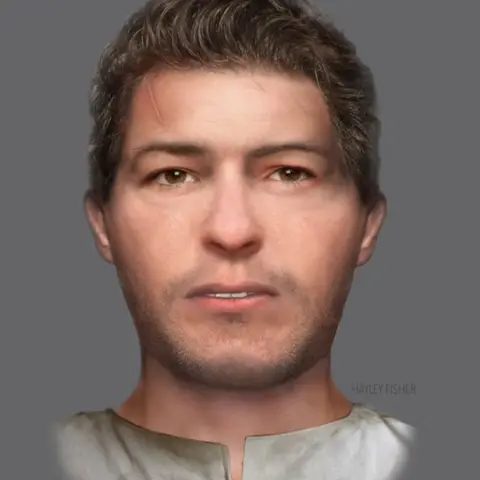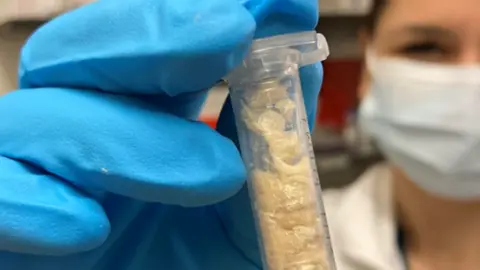Research sheds new light on ancient bones found at Cramond
 City of Edinburgh Council/Hayley Fisher
City of Edinburgh Council/Hayley FisherNew analysis of ancient human remains found near Edinburgh has shown some of them travelled widely across Scotland.
The skeletal remains of nine adults and five infants were found in Cramond in 1975 during a Roman bathhouse excavation.
The bones and teeth were later dated back to the 6th Century.
Work led by the University of Aberdeen has now revealed that one of them grew up on the west coast before making Cramond her home.
Another male member of the group appears to have travelled from the Southern Uplands, Southern Highlands or Loch Lomond.
The remains were discovered when work on a new car park unearthed the former bathhouse of the Roman fort at Cramond.
Previous research had suggested they belonged to different generations of a noble family from the Dark Ages, and at least one of them had suffered a violent death.
Using isotope analyses, researchers have now been to look at the diet and origins of each of the adults in the group.
 University of Aberdeen
University of AberdeenProf Kate Britton, senior author of the study, said they were surprised to discover that despite being buried in close proximity to each other, two of them were brought up hundreds of miles away.
"Food and water consumed during life leave a specific signature in the body which can be traced back to their input source, evidencing diet and mobility patterns," she said.
"Tooth enamel, particularly from teeth which form between around three and six years of age, act like little time capsules containing chemical information about where a person grew up.
"When we examined the remains, we found six of them to bear chemical signatures consistent with what we would expect from individuals growing up in the area local to Cramond but two - those of a man and a woman - were very different.
"This suggests that they spent their childhoods somewhere else, with the analysis of the female placing her origins on the west coast."
The remains of a man had an isotopic signature more typical of the Southern Uplands, Southern Highlands or Loch Lomond area.
Fellow researcher Dr Orsolya Czére added: "It is often assumed that travel in this period would have been limited without roads like we have today and given the political divides of the time.
"The analysis of the burials from Cramond, along with other early medieval burial sites in Scotland, are revealing that it was not unusual to be buried far from where you had originally grown up."
The findings have been published in the Archaeological and Anthropological Sciences journal.
